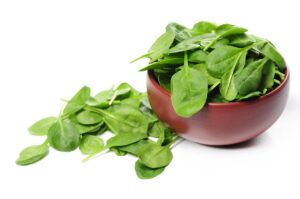Everything about Butterhead Lettuce: Types, Health Benefit And More

What is lettuce?
Lettuce is a green vegetable that serves as the foundation for salads. There are several varieties of lettuce, all known by the scientific name Lactuca sativa.
Lettuce leaf is a well-known green vegetable that may be used in various ways, from salad to medical medicines. Since the notion of green goods has taken hold worldwide, lettuce has grown in popularity not just as a food item but also in various other forms. There are seven primary green lettuce cultivar groupings, each with several variants such as loose-leaf, Romaine, iceberg, butterhead, and summer crisp.
Types of lettuce
Lettuce Bibb
Bibb lettuce, one of the two varieties of butter lettuce, is distinguished by little bundles around the size of a fist. Because it’s one of the most costly lettuces on the market, it’s sweeter lettuce found in somewhat higher-end recipes.
Lettuce from Boston
Boston lettuce is the other variety of butter lettuce. It has supple leaves that make lettuce cups and sandwiches extremely easy to make. However, Boston lettuce bruises and wilts fast, so it’s better to consume it while still crisp.
Lettuce iceberg
Because of its low cost, crisp texture, and mild flavor, you may obtain this popular lettuce in most pre-mixed sandwiches at the supermarket.
The majority of us consume a significant amount of spinach, romaine, and even iceberg lettuce. After all, what would life be without a delicious wedge salad now and then? However, how frequently do you buy Butterhead Lettuce at the supermarket?
Butter lettuce is delicious, tender lettuce that comes from its buttery flavor! Many people mistake it for cabbage because of its form and color (frequently red). It’s even referred to as “cabbage lettuce!” by some.
How Does It Taste?
Lettuce vegetable, as previously said, has a buttery flavor. That isn’t to say it doesn’t have the normal lettuce flavor; it simply isn’t as “grassy.” It has a delicious taste to it as well!
Butterhead Lettuce's Advantages
Butterhead lettuce has a higher iron content than other forms of lettuce. This makes it an excellent salad option, especially for vegans! Lettuce also contains a lot of Vitamin A and K, and even some manganese, folate, and potassium.
Nutritional Values for Butter Lettuce
A single serving is equivalent to one cup of food. A cup of butter lettuce provides the following nutrients:
- calorie count: 7
- 1 g of total fat
- 0 mg of cholesterol
- Sodium (mg): 2.8
- Carbohydrates in total: 1.2 g
- 6 g fibre in the diet
- 5 g of sugar
- 0 g of added sugar
- 7 g of protein
Health Benefits of Butter Lettuce
1. Butter lettuce may be beneficial to bone health.
When it concerns bone strength, vitamin D or calcium typically takes center stage, but vitamin K should also be included. Vitamin K stimulates the growth and strength of bones by activating proteins involved in their production.
2. It contains folate, which is necessary for healthy reproduction.
Folate is a vital vitamin for everyone, but it is especially important for those who have ovaries throughout their reproductive years.
To avoid birth abnormalities of the brain and spine, it is suggested that you consume folate-rich meals and supplement with 400 micrograms of folate.
Lettuce varieties
Although romaine and iceberg lettuce are the most prominent varieties, there are many more, each with a distinct flavor and nutritional benefits. Here are five unique lettuce types
1. Crisphead lettuce: Crisphead lettuce, often known as iceberg or head salad greens, is popular lettuce. While it resembles cabbage, it is a completely distinct species.
2. Lettuce Romaine: Romaine is another popular lettuce used in Caesar salads, sometimes known as cos. It has broad veins and green, crisp leaves. Premature, occasionally crimson leaves are typically used to spring mix, a blend of infant leaves from a variety of green vegetables.
3. Lettuce butterhead: Butterhead lettuce derives its name from its leaves’ smooth, buttery texture. It’s also called cabbage lettuce because of its shape.
4. Red butterhead lettuce: Red butter lettuce has reddish leaves and is remarkably similar to green butter lettuce. Butter lettuce produces loose, delicate cup-shaped leaves. As its name suggests, butter lettuce has a buttery, somewhat sweet flavor.
Types of lettuce for salads
1. Lettuce, green or red leaf: These two lettuce varieties have a vibrant leafy taste. The leaves are never papery and come in large heads.
2. Arugula: The lacy and dainty leaves of arugula have a spicy taste to them. That edge makes it ideal for the simplest salads–just leaves and vinaigrette–and irresistible according to the yuppies of the 1990s.
3. Lettuce: Bibb, Butter, or Boston: The texture of this lettuce, which goes from any of the above B-prefixed names, is buttery but crunchy. You’ll get a lovely crunch when you bite into it, followed by near-melt-in-your-mouth goodness.
4. Chicory & Frisee: Free and chicory are comparable greens that are prickly, bitter, and extremely nutritious. We prefer to serve these two together, much as we do with escarole.
5. Butter Lettuce Preparation and Storage: If the root is still connected to the lettuce head, preserve it in its original packaging in a plastic bag, keeping the roots wet. If the leaves aren’t attached to the root, wash and dry them before wrapping them in paper towels and storing them in a plastic bag for up to a week.
Submerge lettuce leaves in a large dish of ice water in the freezer before serving as lettuce cups. This technique keeps lettuce cool and crisp before serving; thoroughly dry with a dishtowel.
FAQs
Carotenoid antioxidants, including beta carotene, lutein, and zeaxanthin, are abundant in this leafy lettuce. These cover your eyes from macular degeneration, a disorder that can cause vision loss in one or both eyes.
Romaine lettuce is the healthiest. It has more folate, potassium, beta carotene, and lutein than red leaf, green leaf, butterhead (Boston and bibb kinds), and iceberg lettuce.
Will enhance the flavor of your favorite sandwich by using Iceberg Lettuce. The high water content of iceberg lettuce provides the bread, which normally melts inside a bowl, a chilly crunch.
Butterhead lettuce has a gentle, sweet taste that complements a variety of cuisines. It goes well with most toppings and can help your salad taste and look better.
It’s named for its buttery texture, not its flavor, which is light with floral sweetness and goes well with sharp tastes like strong cheeses, citrus, and meat.
Vitamin A is abundant in both butterhead and romaine lettuce. Butterhead lettuce has 163 percent less Vitamin A than Romaine lettuce.
Vitamins and minerals abound in butter leaf lettuce. It’s high in vitamins A, C, K, calcium, and iron, all of which strengthen bones and combat inflammatory disorders.
In terms of nutrition, Romaine is preferred over the iceberg. Romaine is high in minerals such as vitamins A and C and folic acid and magnesium.
Butterhead lettuce derives its name from its leaves’ smooth, buttery texture. Because of its spherical form, it’s also referred to as cabbage lettuce. Bibb and Boston’s lettuce are the most common butterhead lettuce varieties.
Lettuce leaves. Leaf lettuce does not create a head and is significantly crisper than butterhead or buttercrunch lettuce, forming a loosehead like a rosette when mature.
Crisphead, butterhead, Romaine, and loose-leaf lettuce are the four types of lettuce.
The following are the types of lettuce leaves:
- Lettuce leaves.
- Lettuce Romaine
- Lettuce with icebergs.
- Lettuce from Boston.
- Lettuce Bibb.
Butter lettuce is a variety of lettuce with big, soft leaves and a sensitive feel. It is also recognized as Bibb lettuce or butterhead lettuce.
After that, the easiest approach to keep lettuce heads is to remove any injured or wilted leaves and stems and wrap them in a few toilet tissues. Refrigerate until ready to use in the freezer compartment of your refrigerator.
Carbohydrate, by difference (g)= 0.33 Protein (g)= 0.2
Sugars, total (g)= 0.14 Fibre, total dietary (g)= 0.16 Energy (kcal)= 1.95
From seed to maturity, butterhead lettuce takes roughly 45 days. It’s often planted in the spring and then again in the early fall for harvesting in late autumn or early winter.
The mild flavor goes well with a wide variety of dishes, making it an excellent complement to breakfast sandwiches. Also, don’t restrict yourself to raw lettuce.
Conclusion
Lettuce is a healthy vegetable that appears in various shapes and sizes. It’s high in fiber, potassium, manganese, vitamins A and C, among other minerals. While most varieties are used in salads, hamburgers, and wraps, they may also cook some. If you’re searching for a way to spice up your diet, consider some of these delectable lettuce varieties.






